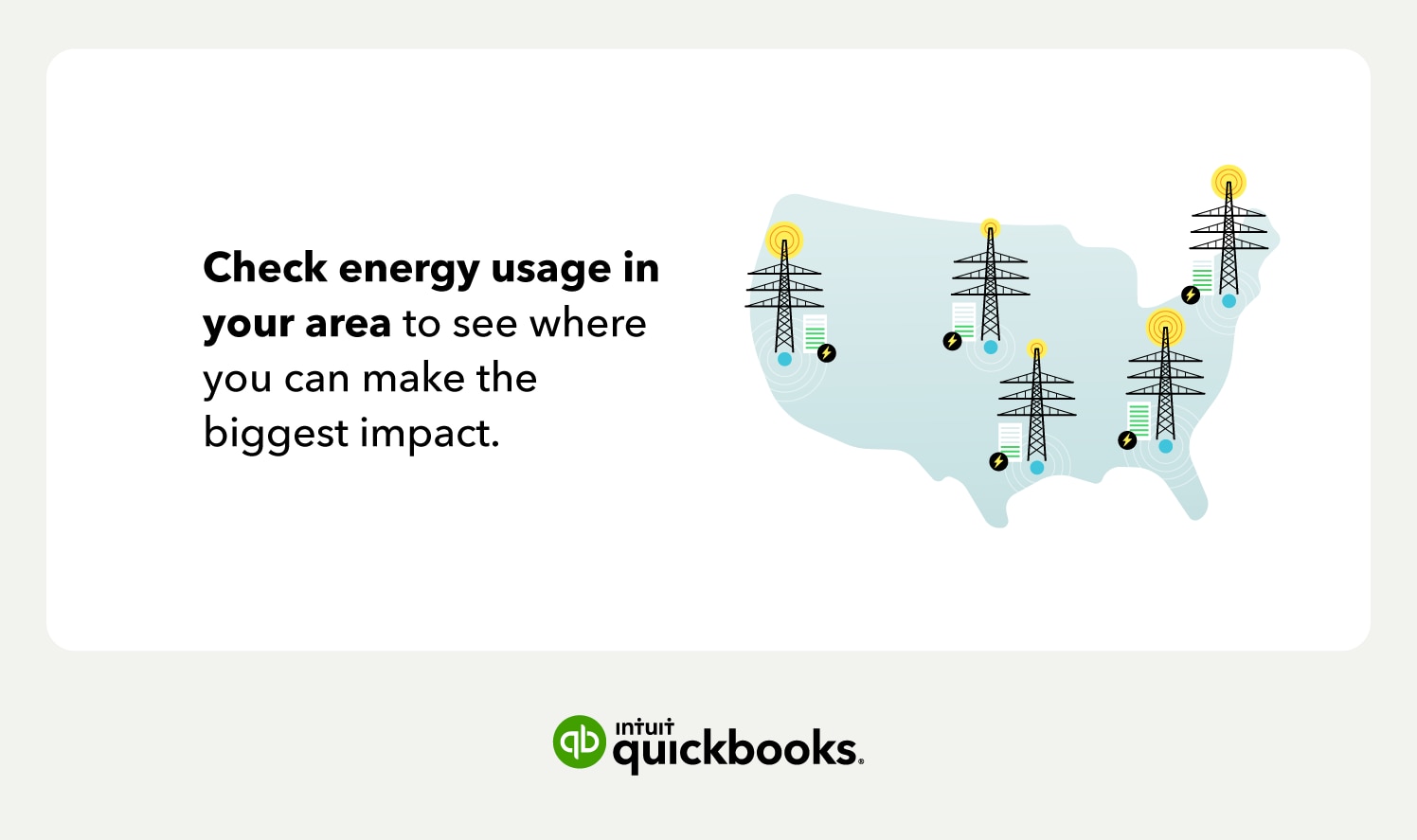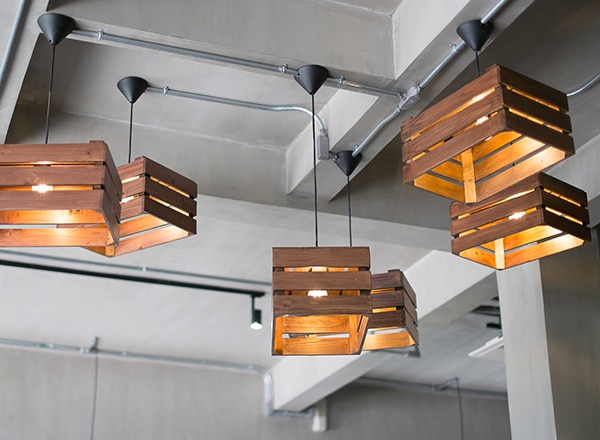Like any audit, energy audits create opportunities for improvement. When inefficiencies are addressed, the business prospers—both financially and from a sustainability standpoint. To better understand the whys and hows behind energy audits, we spoke with Mike Jones, president of SEEDidaho. SEED stands for Sustainable Environment Engineered Design.

How to conduct an energy audit of your office or storefront
Why should I conduct an energy audit?
Jones says there are generally two main reasons to conduct an energy audit: sustainability and cost savings. “It’s twofold, depending on where you are geographically or maybe even depending on the market you’re in,” he says. “Generally, they go hand in hand.”
If a business is focused on sustainability, that likely includes reducing waste, including wasteful energy. But lowering your business’s energy consumption can also reduce overhead costs.
“Across the United States, the HVAC load is somewhere between 25 to 40% of an office’s total utility bill,” Jones says. Older machines require more power, which in turn puts more strain on the environment. Trading out an older machine for a new, more efficient one can cut that bill dramatically.
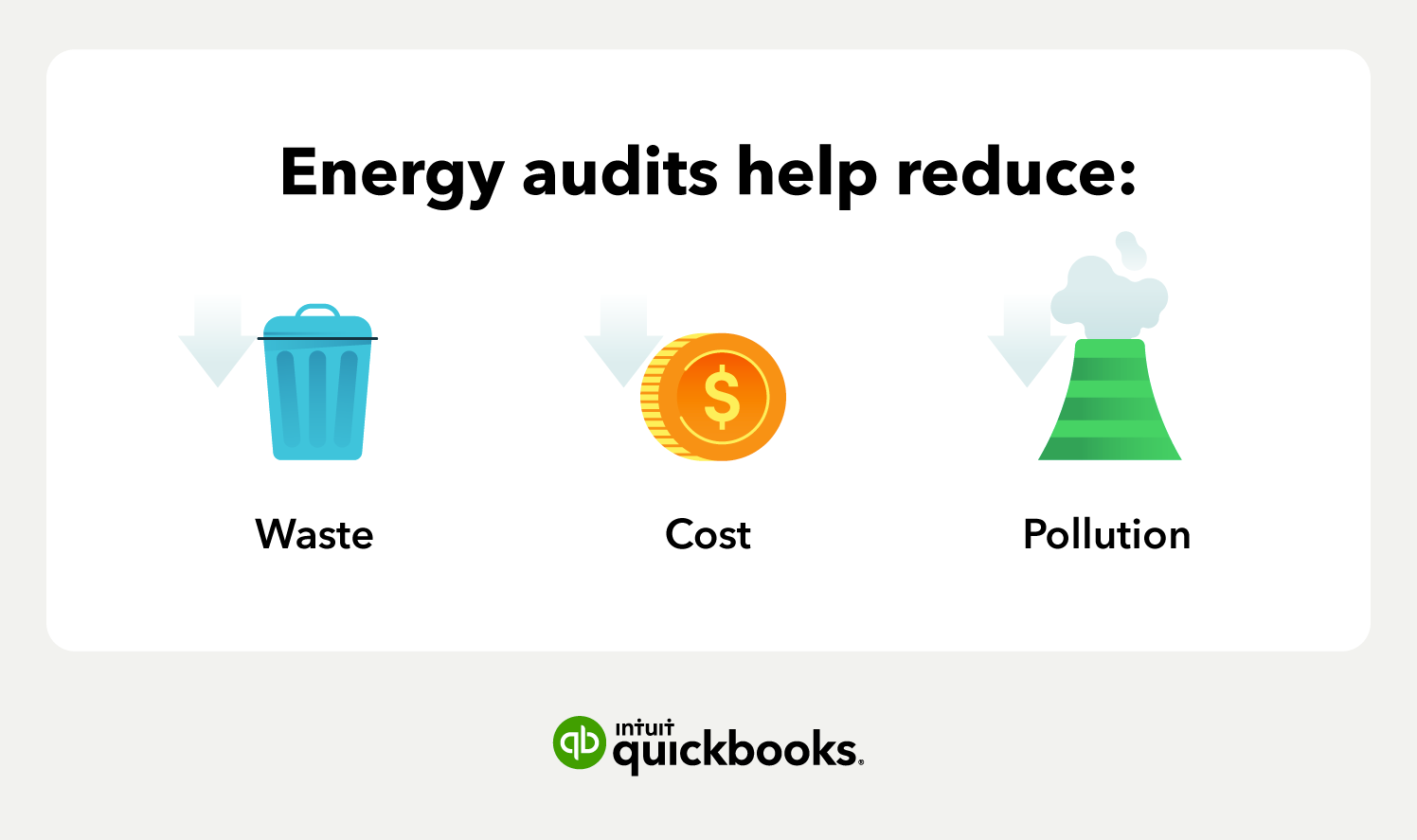
How to conduct an energy audit
Depending on your comfort level, you may want to bring in an expert to conduct an energy audit of your office or storefront. But Jones says that’s not necessarily a requirement. “I think, with enough research, a somewhat savvy person would be able to perform an audit,” he says. “Especially if they take the time and read the guiding documents on how to do it and what to look for.”
One resource he recommends is the American Society of Heating, Refrigeration and Air-Conditioning Engineers (ASHRAE). “ASHRAE has defined a certain level of energy audit based on more of a custom need,” he says. Their website offers training materials for anyone interested in learning how to conduct an effective energy audit.
If you plan on performing the energy audit yourself, Jones recommends first looking at your business’s lighting and HVAC system
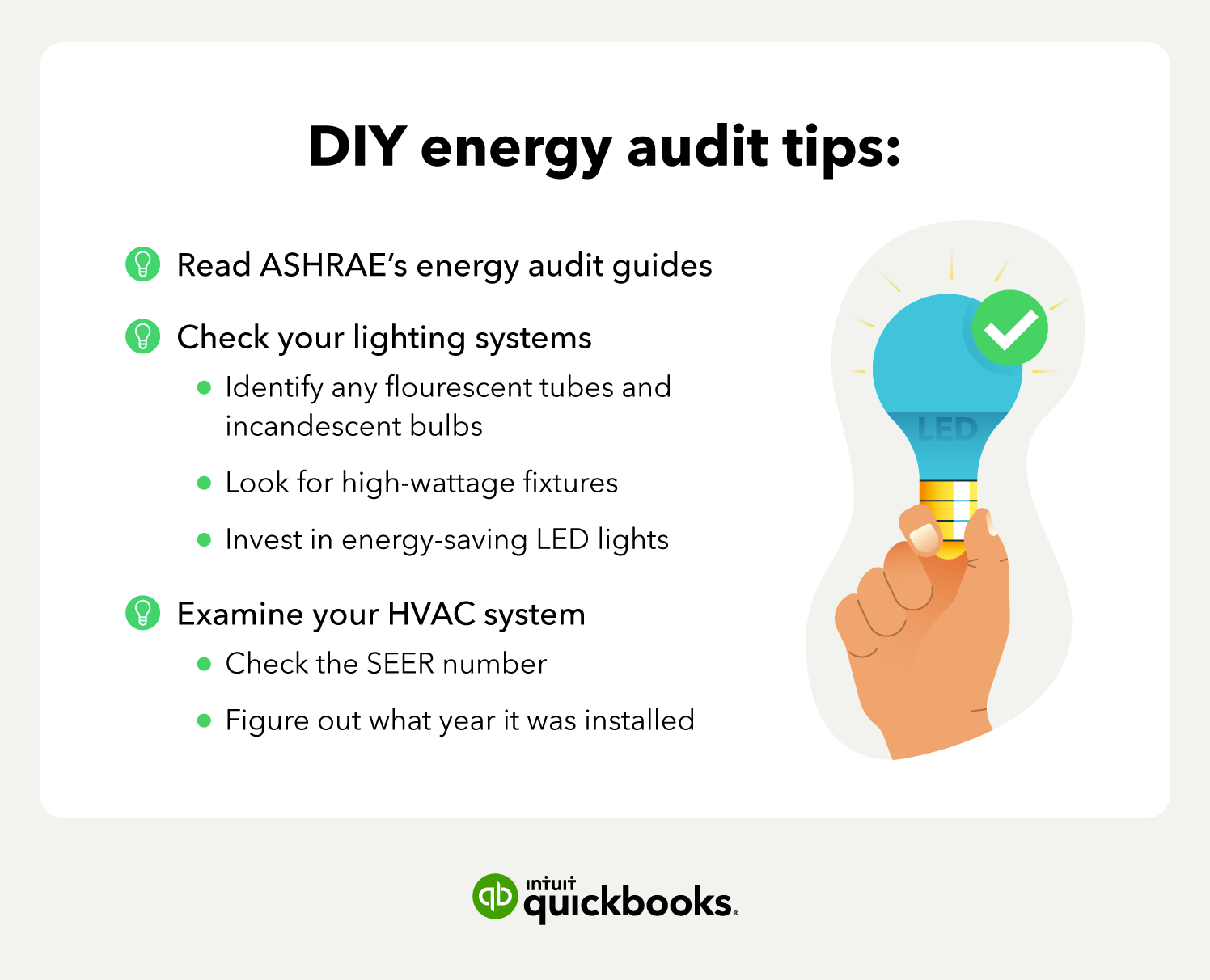
Lighting audit tips and tricks
If your office or storefront is more than 10 years old, there’s a good chance your current lighting could use an upgrade . The good news is it’s pretty simple from an auditing perspective. Just start with identifying any fluorescent tubes and incandescent bulbs.
“That’s definitely the low-hanging fruit,” Jones says. “Anything that also works as a heater, like incandescents and compact fluorescents—every element of heat is wasted electricity.”
LEDs, on the other hand, are much more efficient. “They usually feel cool,” Jones says. “When an electrical device creates excess heat, a lot of times that means more electricity. LEDs don’t create excess heat, so less electricity.”
The second step to auditing your business’s lighting is to look for high-wattage fixtures. “Anyone can go up to a light fixture and say, ‘This is a 500-watt fixture, and I can do the same job with a 200-watt fixture,’” Jones says. Just be sure to keep an eye on light output.
“You can’t always replace a 500-watt bulb with a 13-watt LED,” Jones says. “There’s an actual lighting production aspect that needs to be considered.”
HVAC audit tips and tricks
Similar to spotting and replacing a 500-watt bulb, Jones says almost anyone can do their own HVAC energy audit.
“Let’s say you have a 3 ton, split HVAC unit, very similar to what almost everyone has in their home as an HVAC system,” Jones says. “You would look at it and say, ‘OK, this one produces 36,000 BTU.’ That’s the output of the HVAC unit. Right next to that number, you might see something that says ‘10 SEER.’ That stands for Seasonal Energy Efficiency Ratio. That is the manufacturer’s attempt to say, ‘Relative to other units at the time, this one performs at a seasonal energy efficiency ratio of 10.’”
If you see that, you should know 10 is not a great number. Starting in 2006, manufacturers were required to create units of at least 13 SEER. But that’s now just the minimum energy efficiency ratio. Today’s units that produce 36,000 BTU may operate at 20 SEER—double what they were operating at 15 years ago.
Jones says replacing an old 10 SEER unit with a 20 SEER unit is effectively the same as switching out all those 500-watt fixtures. “It’s not exactly linear—it’s more of an exponential curve—but the rough concept is there,” he says. “You’re doubling your efficiency ratio relative to HVAC production for that size of unit.”
An easy hack for figuring out if your unit is old and ready to be replaced is to check out what year it was installed. If that unit is 15 years old, it’s definitely time to call your local HVAC contractor.
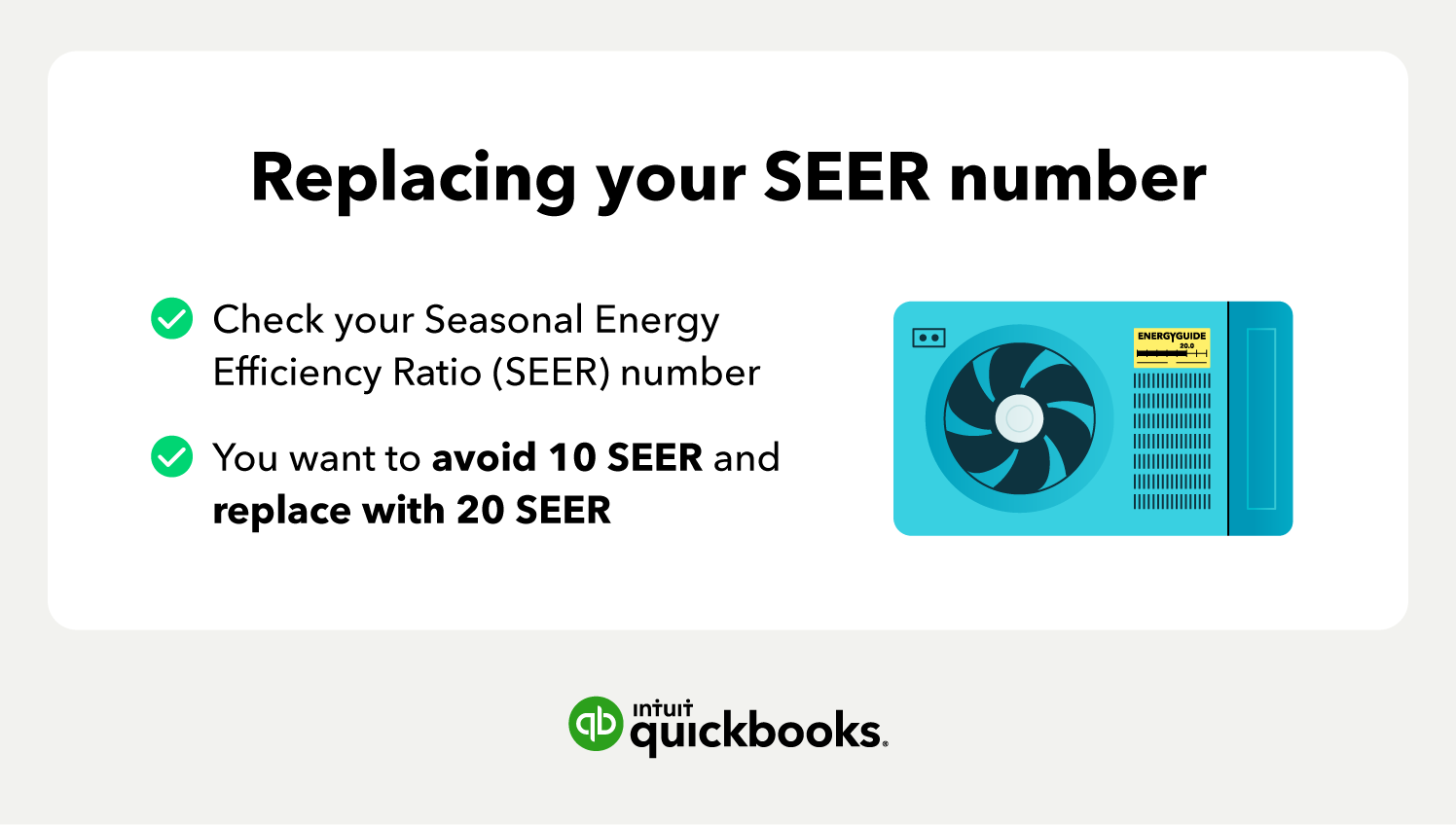
Will an energy audit make a difference for my business?
Prior to performing an energy audit, it may help to understand a few things about energy usage in general. Most importantly, you should recognize the role geography plays in how much your business is likely to save financially.
“No energy audit applies to all,” Jones says. Consider, for instance, a business that operates in Santa Cruz, California, where temperatures hover near a comfortable 70 degrees year-round. You certainly could replace an old HVAC system with a new, more energy-efficient one there. But the savings each month would be small relative to how small the bill was before. Compare that to a city where the HVAC is on all the time, and you might see a much bigger impact.
Another aspect to think about is your area’s utility rate. “Every jurisdiction—every geographical area—has a different utility rate,” Jones says. “If you are in Hawaii, it’s 30¢ a kilowatt hour. If you’re in Boise, Idaho, it’s about 6¢ per kilowatt hour.”
That means small changes like switching out light bulbs may go a long way in Hawaii but not as far in Idaho. And for a business that’s more interested in return on investment, that’s something to consider.
Of course, if your goal is sustainability regardless of cost savings, you may find that performing an energy audit pays off in different ways. These benefits may include reputation, customer satisfaction, environmental impact, and more. Either way, it doesn’t hurt to find out how your business can conserve energy in the future.
